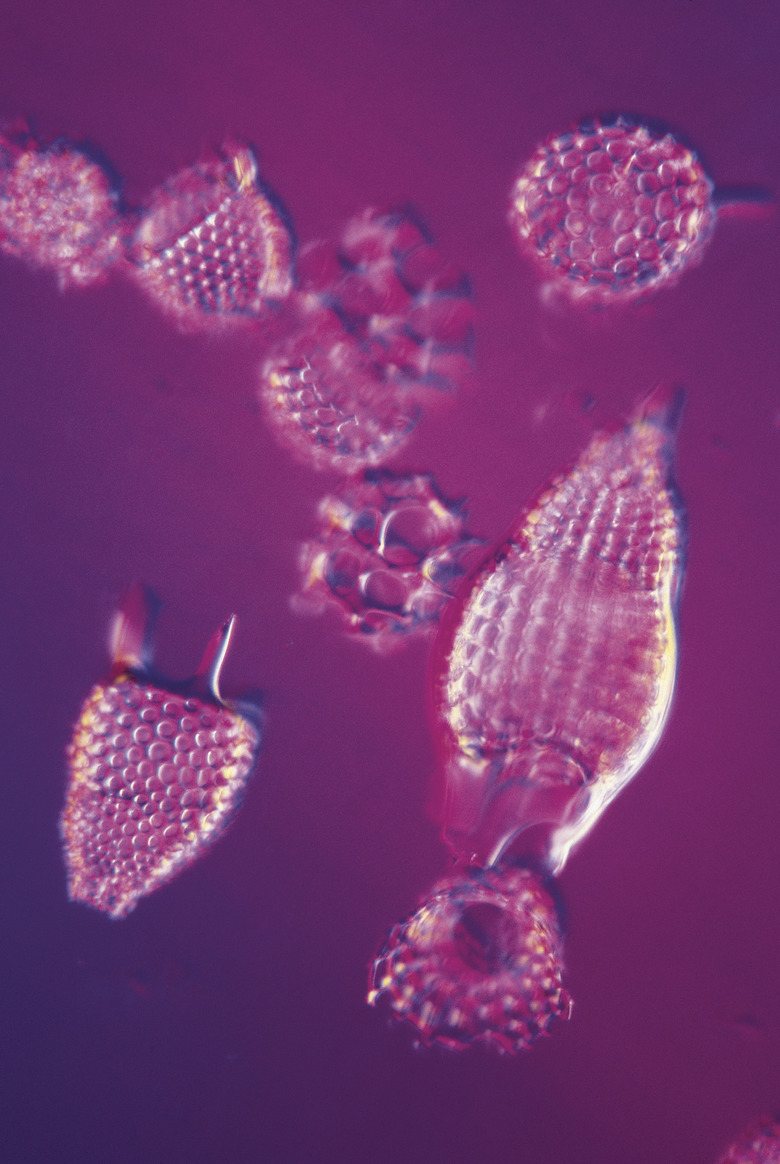What Are The Parts Of Microbiology?
Microbiology is the study of organisms too small to be seen with unaided vision. Microbiology can be categorized in many different ways, as befits the study of organisms that far outnumber multicellular organisms. Microbiology can be approached as the study of different taxonomic divisions, or divided by the groups of organisms under study. Microbiology can also be thought of as a collection of different fields of study, or it can be split up by considering the different activities that microbiologists undertake.
Divisions
Divisions
Biologists have classified all life on Earth into one of three huge taxonomic groups called domains: archaea, bacteria and eukarya. Archaea and bacteria are prokaryotes, organisms whose cells have no central nucleus. They are all single-celled organisms. Bacteria are generally distinguished by a distinctive structure in their outer covering — a cell wall built of molecules called peptidoglycans. Archaea are similar to bacteria, except that their internal biochemistry works by different rules and many of them are adapted to harsh environments. Eukarya are characterized by cells that have nuclei and other unique internal structures in their cells. Although many eukaryotes are large organisms, such as elephants, redwood trees and humans, the vast majority of eukaryotic species are single-celled microorganisms.
Groups
Groups
Another way of dividing up the study of microbiology is by all the groups of single-celled organisms. This ignores the taxonomic level of the organisms and essentially considers all entities beneath a certain size to fall under the umbrella of microbiology. This includes the bacteria and archaea, which are domains, and the fungi, algae and protozoa, which are kingdoms within the domain of eukarya. It also includes the viruses, which are not in any taxonomic classification of living organisms.
Fungi include molds and yeast. Algae are single-celled plants, the kind that turn the surface of a pond green or yellow. Protozoa are like single-celled animals — they're generally more motile than algae or fungi. Viruses are an entirely different group of entities that straddle the line between alive and not alive, but their study also falls under the umbrella of microbiology.
Disciplines
Disciplines
Microbiology can also be classified by the disciplines that study microbiology. For example, immunologists study the mechanisms of human diseases caused by infection from bacteria, fungi, viruses or protozoa, while epidemiologists study the way in which infections are transmitted. Food and agricultural microbiologists study the way in which fungi or bacteria can be used to produce food — along with the mechanisms by which microorganisms can damage crops. Biotechnologists seek ways to use microorganisms to produce materials of use to humanity.
Activities
Activities
Microbiologists perform a variety of activities in the course of their study of microscopic entities, and microbiology can also be classified on the basis of these activities. These are conveniently organized into groups called the six "I"s. Those six "I"s can be expressed as inoculation, incubation, isolation, inspection, investigation and identification. They refer to the processes of culturing, sampling, observing and testing microorganisms.
Cite This Article
MLA
Gaughan, Richard. "What Are The Parts Of Microbiology?" sciencing.com, https://www.sciencing.com/parts-microbiology-21595/. 24 April 2017.
APA
Gaughan, Richard. (2017, April 24). What Are The Parts Of Microbiology?. sciencing.com. Retrieved from https://www.sciencing.com/parts-microbiology-21595/
Chicago
Gaughan, Richard. What Are The Parts Of Microbiology? last modified August 30, 2022. https://www.sciencing.com/parts-microbiology-21595/
